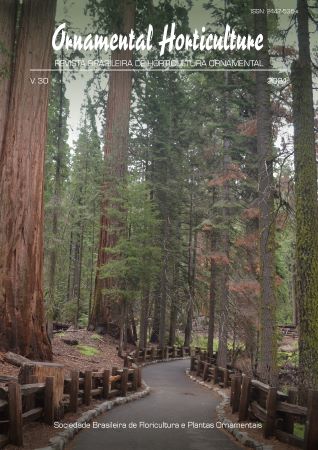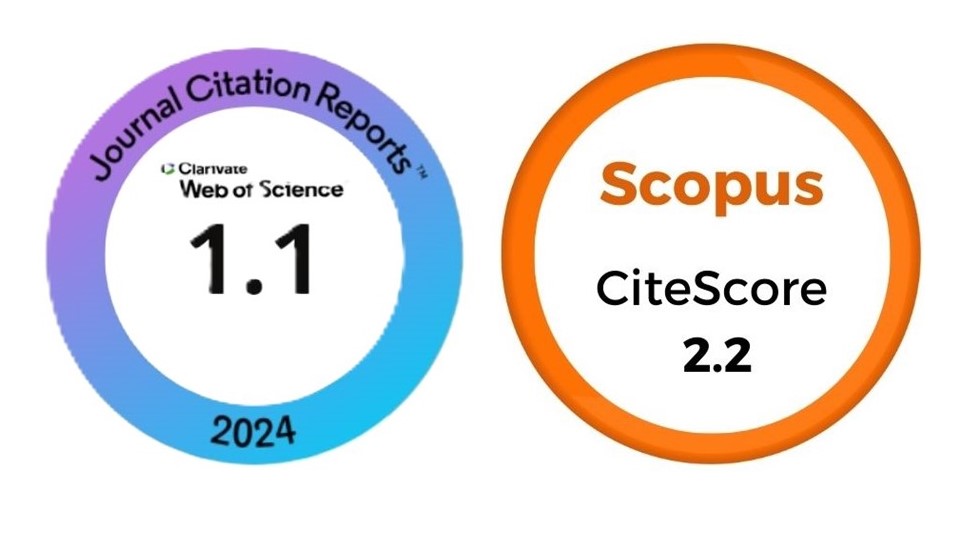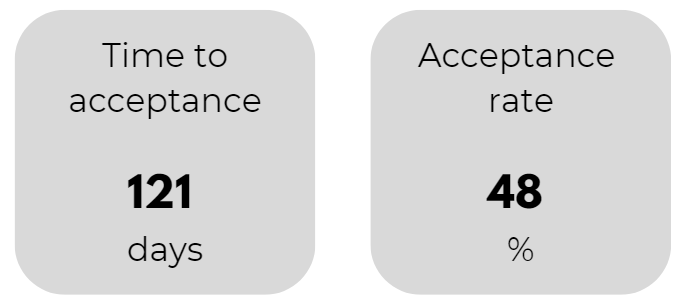Evaluating Diversity and Molecular Association Analysis in Wild Iranian Gladiolus
DOI:
https://doi.org/10.1590/2447-536X.v30.e242813Keywords:
genetic resource, geographical factors, inflorescenceAbstract
Gladiolus is considered one of the most significant globally ornamental crops, extensively utilized as a cut flower and for outdoor landscaping. However, the local destruction of Iranian Gladiolus as a weed threatens the biodiversity of this species. This research aimed to compare Iranian Gladiolus populations. A total of 76 Iranian Gladiolus accessions were collected. These accessions exhibited significant phenotypic variability across all the studied traits. Geographical factors were found to significantly contribute to this diversity. Additionally, to explore the association between genetic markers and phenotypic traits, both ISSR and IRAP markers were employed. Significant correlations were identified between stem length and latitude (r=0.746, P<.01). Moreover, floret number showed a strong correlation with spike length and longitude (r=0.777, P<.01 and r=0.658, P<.05, respectively). The Hmdn8 population from Hamedan province exhibited superior values across all phenotypic traits. Furthermore, the Krdstn4 population from Kurdistan province, known for its superior inflorescence traits, was identified as suitable for specific breeding purposes. The climatic conditions of Kurdistan, characterized by a cold semi-humid climate and high annual rainfall, indicate that higher latitudes and colder periods are favorable for Gladiolus growth and flowering. A total of 146 polymorphic bands were produced from two types of markers, ISSR and IRAP. The association analysis revealed that the ISSR4-3, ISSR2-20 and ISSR5-24 markers showed significant correlations with stem length and floret number. Additionally, informative markers were identified for other traits, demonstrating significant associations with multiple traits in Gladiolus. These findings are crucial for identifying crucial genomic regions for Gladiolus breeding programs.
Downloads
References
AZIMI, M.H. Assessment and ranking of new Gladiolus hybrids in Iran. Journal of Horticulture and Postharvest Research, v.3, n.2, p.235-244, 2020. https://doi.org/10.22077/jhpr.2020.2972.1112
AZIZ, S.; FIRDOUS, S.; RAHMAN, H.; AWAN, S.; MICHAEL, V.; MERU, G. Genetic diversity among wild pomegranate (Punica granatum) in Azad Jammu and Kashmir region of Pakistan. Electronic Journal of Biotechnology, v.46, p.50-54, 2020. https://doi.org/10.1016/j. ejbt.2020.06.002
BRADBURY, P.J.; ZHANG, Z.; KROON, D.E.; CASSTEVENS, T.M.; RAMDOSS, Y.; BUCKLER, E.S. TASSEL: Software for association mapping of complex traits in diverse samples. Bioinformatics, v.23, n.19, p.2633-2635, 2007. https://doi.org/10.1093/bioinformatics/btm308
CANTOR, M.; TOLETY, J. Gladiolus. In: KOLE, C. (eds) Wild Crop Relatives: Genomic and Breeding Resources. Berlin, Heidelberg: Springer, 2011.
CHAUDHARY, V.; KUMAR, M.; SHARMA, S.; KUMAR, N.; KUMAR, V.; YADAV, H.K.; SHARMA, S.; SIROHI, U. Assessment of genetic diversity and population structure in Gladiolus (Gladiolus hybridus Hort.) by ISSR markers. Physiology and Molecular Biology of Plants, v.24, p.493-501, 2018. https://doi.org/10.1007/s12298-018-0519-2
EBRAHIMI, A.; ASADI, A.; MONFARED, S.R.; SAHEBI, M., REZAEE, S.; KHALEDIAN, Y. Evaluation of phenotypic diversity of the endangered orchid (Orchis mascula): Emphasizing on breeding, conservation and development. South African Journal of Botany, v.132, p.304-315. 2020. https://doi.org/10.1016/j.sajb.2020.05.013
ECHEVERRÍA, M.L.; CAMADRO, E.L. Morphological and molecular variability of wild diploid and polyploid populations of Chrysolaena flexuosa (Sims) H. Rob.: relevance for ornamental breeding. Scientia Horticulturae, v.260, p.108875, 2020. https://doi.org/10.1016/j. scienta.2019.108875
GABRIELIAN, E. The genus Gladiolus (Iridaceae) in southern Transcaucasia. Bocconea, v.13, p.445-455, 2001.
GANGWAR, H.; GAHLAUT, V.; CHAUHAN, R.; SINGH, S.; JAISWAL, V. Development of species-specific ISSR-derived SCAR marker for early discrimination between Cinnamomum verum and Cinnamomum cassia. Molecular Biology Reports, v.50, n.8, p.6311-6321, 2023. https://doi.org/10.1007/s11033-023-08578-z
GHAHRAMAN, A. Colorful Flora of Iran. Tehran: The Research Institute of Forest and Pastures, 1979.
HASAN, N.; CHOUDHARY, S.; NAAZ, N.; SHARMA, N.; LASKAR, R.A. Recent advancements in molecular marker-assisted selection and applications in plant breeding programmes. Journal of Genetic Engineering and Biotechnology, v.19, n.1, p.128. 2021, https://doi.org/10.1186/s43141-021-00231-1
KAMAL MEENA, V.; VARDHAN SINGH SHEKHAWAT, H.; CHAND, S.; CHOUDHARY, K.; KUMAR SHARMA, J.; LEKHA, L. Advances in Molecular Marker Technology and their Significance in Plant Improvement Strategies. Hong Kong: IntechOpen, 2023.
KAUR, V.; ARAVIND, J.; MANJU, JACOB, S.R.; KUMARI, J.; PANWAR, B.S.; PAL, N.; RANA, J.C.; PANDEY, A.; KUMAR, A. Phenotypic characterization, genetic diversity assessment in 6,778 accessions of barley (Hordeum vulgare L. ssp. vulgare) germplasm conserved in National Genebank of India and development of a core set. Frontiers in Plant Science, v.13, p.771920, 2022. https://doi.org/10.3389/fpls.2022.771920
KHADIVI, A.; MIRHEIDARI, F.; MORADI, Y.; PARYAN, S. Phenotypic and fruit characterizations of Prunus divaricata Ledeb. germplasm from the north of Iran. Scientia Horticulturae, v.261, p.109033, 2020. https://doi.org/10.1016/j.scienta.2019.109033
KUMAR, K.; ANJOY, P.; SAHU, S.; DURGESH, K.; DAS, A.; TRIBHUVAN, K.U.; SEVANTHI, A.M.; JOSHI, R.; JAIN, P.K.; SINGH, N.K.; RAO, A.R.; GAIKWAD, K. Single trait versus principal component-based association analysis for flowering related traits in pigeonpea. Scientific Reports, v.12, n.1, p.10453, 2022. https://doi.org/10.1038/s41598-022-14568-1
LAZARIDI, E.; KAPAZOGLOU, A.; GERAKARI, M.; KLEFTOGIANNI, K.; PASSA, K.; SARRI, E.; PAPASOTIROPOULOS, V.; TANI, E.; BEBELI, P.J. Crop landraces and indigenous varieties: A valuable source of genes for plant breeding. Plants, v.13, n.6, p.758, 2024. https://doi.org/10.3390/plants13060758
PRISM, G. Release 8.0 Version. Graph Pad software. San Diego, CA, USA. 2018.
PRITCHARD, J.K.; STEPHENS, M.; DONNELLY, P. Inference of population structure using multilocus genotype data. Genetics, v.155, n.2, p.945-959, 2000. https://doi.org/10.1093/genetics/155.2.945
RAMOS, S.N.; SALAZAR, M.M.; PEREIRA, G.A.; EFRAIM, P. Plant and metagenomic DNA extraction of mucilaginous seeds. MethodsX, v.1, p.225-228, 2014. https://doi.org/10.1016/j.mex.2014.09.005
RAŽNÁ, K.; KUČKA, M.; HARENČÁR, Ľ.; MAJTÁN, M. Genetic diversity of selected Gladiolus (Gladiolus× Gandavensis Van Houtte) cultivars assessed by microrna-based markers. Agrobiodiversity for Improving Nutrition, Health and Life Quality, v.6, n.1, 2022. https://doi.org/10.15414/ainhlq.2022.0010
SAS Institute Inc. SAS/STAT. User’s Guide, Version 9. Cary, NC: SAS Institute Inc., 2003.
SINGH, N.; PAL, A.K.; MEENA, B.; ROY, R.K.; TAMTA, S.; RANA, T.S. Development of ISSR-and RAPD-derived SCAR markers for identification of Gladiolus germplasm. The Journal of Horticultural Science and Biotechnology, v.92, n.6, p.577-582, 2017. https://doi.org/ 10.1080/14620316.2017.1309995
SINGH, N.; PAL, A.K.; ROY, R.K; TEWARI, S.K.; TAMTA, S.; RANA, T.S. Characterization of gladiolus germplasm using morphological, physiological, and molecular markers. Biochemical Genetics, v.56, p.128-148, 2018. https://doi.org/10.1007/s10528-017-9835-4
TYAGI, A.; MIR, Z.A.; ALMALKI, M.A.; DESHMUKH, R.; ALI, S. Genomics-assisted breeding: a powerful breeding approach for improving plant growth and stress resilience. Agronomy, v.14, n.6, p.1128, 2024. https://doi.org/10.3390/agronomy14061128
WEN, S.; ZHAO, H.; ZHANG, M.; QIAO, G.; SHEN, X. IRAPs in combination with highly informative ISSRs confer effective potentials for genetic diversity and fidelity assessment in Rhododendron. International Journal of Molecular Sciences, v.24, n.8, p.6902. 2023. https://doi.org/10.3390/ijms24086902
YALI, W.; MITIKU, T. Gene pool, classification and its importance in modern crop improvement program. International Journal of Agricultural Science and Food Technology, v.10, n.2, p.068-073, 2024. https://dx.doi.org/10.17352/2455-815X.000209
ZHANG, Z.; ERSOZ, E.; LAI, C.; TODHUNTER, R.J.; TIWARI, H.K.; GORE, M.A.; BRADBURY, P.J.; YU, J.; ARNETT, D.K.; ORDOVAS, J.M.; BUCKLER, E.S. 2010. Mixed linear model approach adapted for genome-wide association studies. Nature Genetics, v.42, n.4, p.355-360. 2010. https://doi.org/10.1038/ng.546
ZHAO, K.; ARANZANA, M.J.; KIM, S.; LISTER, C.; SHINDO, C.; TANG, C.; TOOMAJIAN, C.; ZHENG, H.; DEAN, C.; MARJORAM, P.; NORDBORG, M. An Arabidopsis example of association mapping in structured samples. PLoS Genetics. v.3, e4. 2007. https://doi.org/10.1371/journal.pgen.0030004
ZHOU, C.; WU, H.; SHENG, Q.; CAO, F.; ZHU, Z. Study on the phenotypic diversity of 33 Ornamental Xanthoceras sorbifolium Cultivars. Plants, v.12, n.13, p.2448. 2023. https://doi.org/10.3390/plants12132448
Downloads
Published
Issue
Section
License
Copyright (c) 2024 Ornamental Horticulture

This work is licensed under a Creative Commons Attribution 4.0 International License.








